The Kerststol is a traditional Dutch bread, typical of the Christmas period, but also loved on other occasions. This fragrant bread is enriched with nuts and raisins and contains a soft almond paste heart. Perfect for any time of the day, it’s particularly delicious as a dessert. Its enveloping aroma is released not only while we prepare it, but especially during baking.
The dough for the Kerststol is simple to prepare: you can knead it by hand or, if you prefer, use the stand mixer with the flat beater, for shortcrust pastry, rather than the dough hook for tougher doughs. It’s a soft dough, so I recommend dusting the work surface with a small amount of extra flour, being careful not to overdo it, to keep the soft consistency. The raisins and chopped nuts should be added at the end, mixing carefully to incorporate them well. It’s important that they are evenly distributed in the dough, otherwise, they risk staying on the surface and burning during baking.
As for the almond paste, we have already seen how to prepare it. It’s important not to confuse it with marzipan, as the proportion of almonds and sugar should be 1:1. Personally, I prefer the version without egg white.
The Kerststol is a leavened cake, but the rising times are rather short, so it is prepared in a few hours. Also, it remains soft for several days if stored correctly, wrapped in plastic wrap. I recommend trying this fragrant bread, which for me was a discovery thanks to the recipe introduced to me by my friend Selene from the blog Viaggiando Mangiando.
For those who love Christmas recipes that can be revisited throughout the year, I also recall…
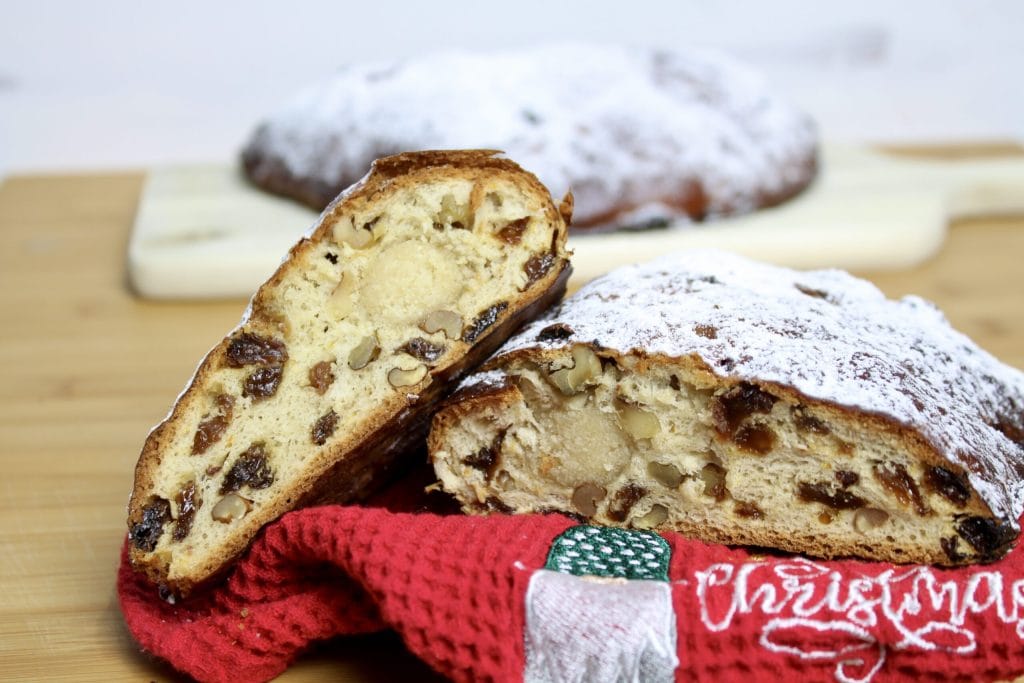
- Difficulty: Easy
- Cost: Economical
- Preparation time: 20 Minutes
- Portions: 2 loaves
- Cooking methods: Oven
- Cuisine: Italian
- Energy 1,662.38 (Kcal)
- Carbohydrates 223.75 (g) of which sugars 91.85 (g)
- Proteins 37.86 (g)
- Fat 75.33 (g) of which saturated 26.58 (g)of which unsaturated 26.73 (g)
- Fibers 12.66 (g)
- Sodium 1,420.86 (mg)
Indicative values for a portion of 350 g processed in an automated way starting from the nutritional information available on the CREA* and FoodData Central** databases. It is not food and / or nutritional advice.
* CREATES Food and Nutrition Research Center: https://www.crea.gov.it/alimenti-e-nutrizione https://www.alimentinutrizione.it ** U.S. Department of Agriculture, Agricultural Research Service. FoodData Central, 2019. https://fdc.nal.usda.gov
Ingredients
- 2 1/2 cups all-purpose flour
- 0.88 oz fresh yeast
- 3 tbsp water
- 1/3 cup milk
- 2 3/4 tbsp sugar
- 1 1/4 tsp salt
- 1/4 cup butter (at room temperature)
- 1/2 lemon (grated zest)
- 1/2 orange (grated zest)
- 1 cup raisins
- 1/2 cup nuts
- 3/4 cup almond paste
- 1 egg (to brush on the surface)
- 0.88 oz butter (melted for after baking)
- as needed powdered sugar (for serving)
Tools
- 1 Stand Mixer
- 1 Brush
Preparation
To facilitate the preparation, I recommend organizing and preparing all the necessary ingredients before starting to knead.
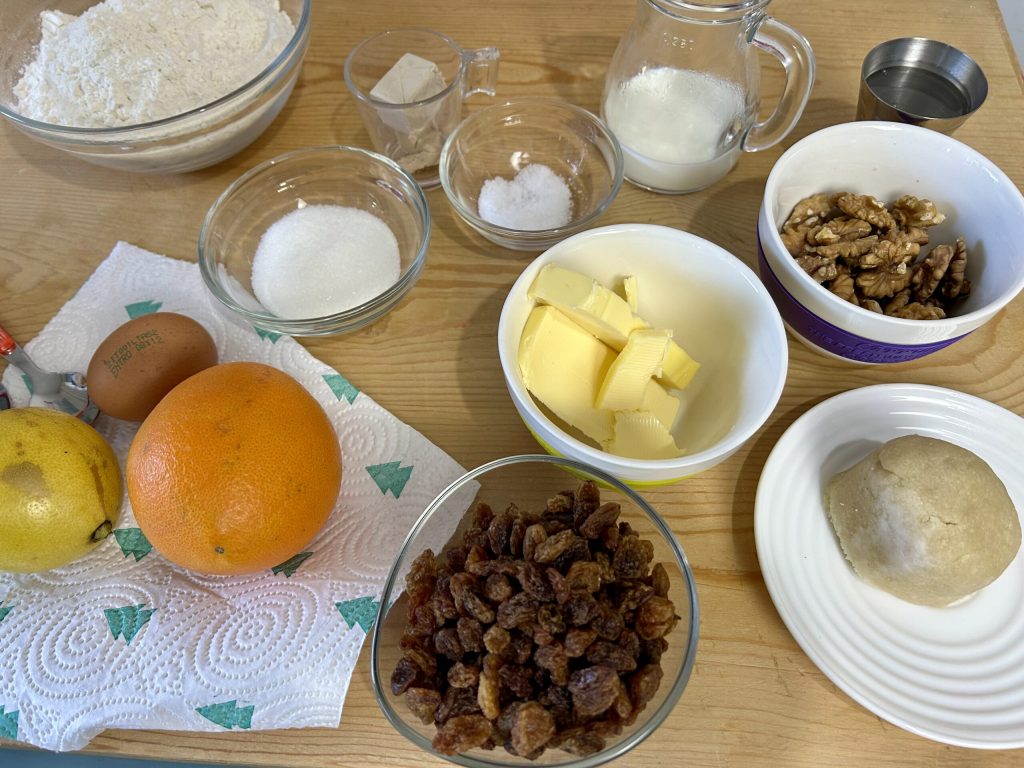
We begin the dough by dissolving the fresh yeast in slightly warmed milk. Add the milk with the yeast to the flour and start mixing. Proceed by adding, in order, the water, sugar, salt, grated zests, and melted butter. Each time, before adding the next ingredient, ensure the previous one is completely absorbed by the dough.
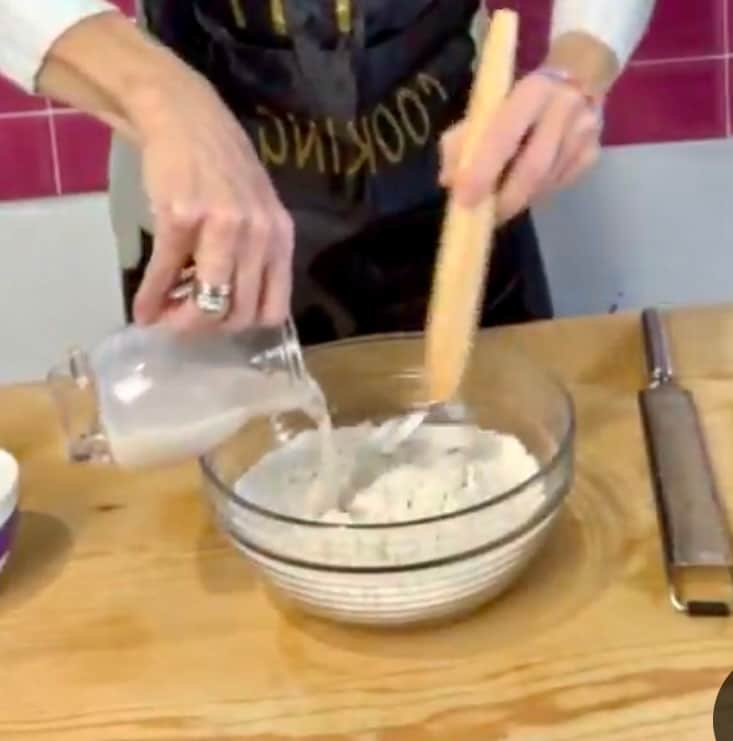
When the dough starts to come together, transfer it to a lightly floured work surface and knead it into a ball. Then, flatten the dough with the palms of your hands and add the raisins and chopped nuts inside. Mix to incorporate the ingredients well, being careful not to overheat the dough with the warmth of your hands. If you’re using a stand mixer, you can complete these steps directly in the machine. When the dough is ready, divide it into two equal parts to get two loaves. Let these loaves rise in the turned-off oven, covered with a cloth for about an hour, they just need to move, doubling is not necessary.
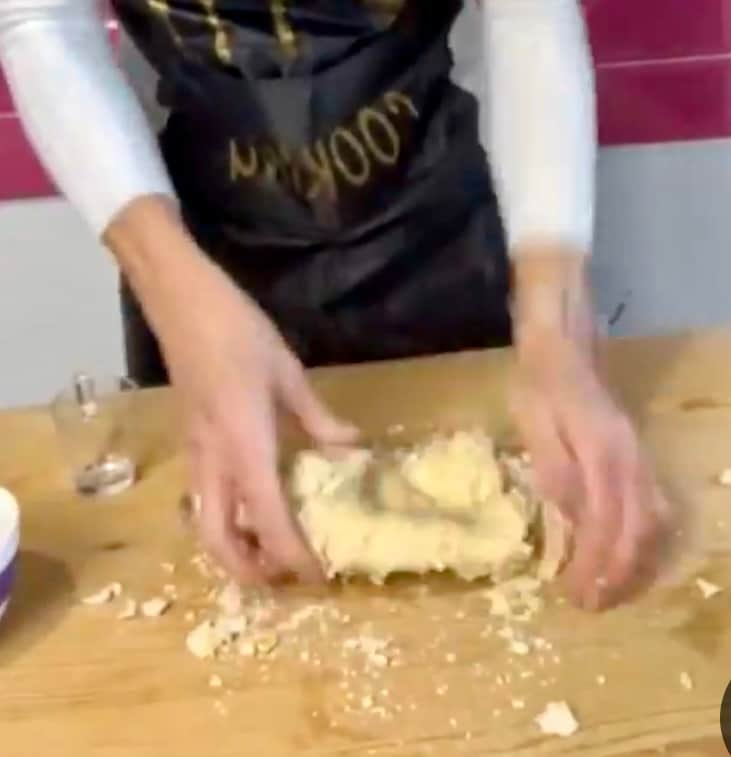
Take the almond paste, divide it in half and, with each part, form a log similar to gnocchi. Roll out one loaf of dough into a circle, using a rolling pin. Place the almond paste log about a third of the way into the circle and fold the dough over itself, forming a half-moon shape.

Close the two half-moons well, pressing the joined edges with your fingertips to seal them. Brush them with beaten egg and let them rise again for about 30 minutes.
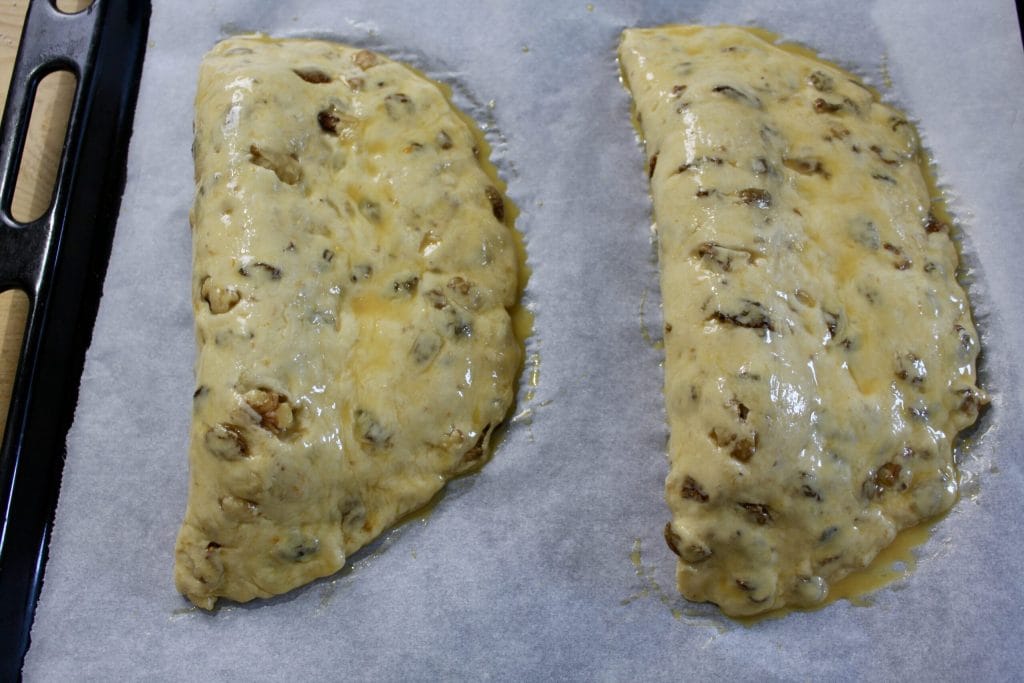
After the resting time, bake the stuffed bread in a preheated oven at 392°F for the first 10 minutes, then lower the temperature to 347°F and bake for another 25 minutes or so. Be careful not to overcook them to prevent the surface from burning. Once out of the oven, brush them generously with melted butter, allowing it to be well absorbed by the surface.

Our Kerststol is ready to be enjoyed, I recommend dusting it with powdered sugar before serving.

NOTES
As already mentioned, it is a very fragrant bread, perfect to enjoy at different times of the day. Although traditionally consumed during the Christmas holidays, it is delicious all year round, even as a sweet conclusion to a meal.
If you liked the recipe or have questions, feel free to comment here or on social media Facebook, Pinterest, Instagram and X.

